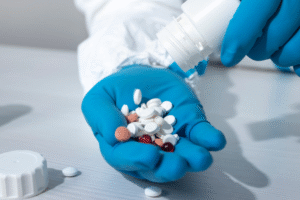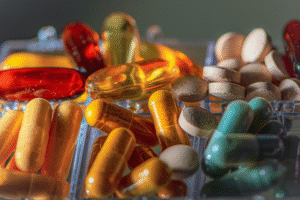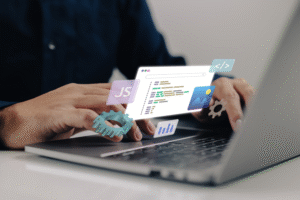Can you trust a supplement manufacturer without seeing how your products are made? Choosing the wrong facility can lead to compliance issues, poor product quality, and serious risks to consumer safety. With FDA inspections, current good manufacturing practices (cGMPs), and third-party audits increasing across dietary supplement programs, business owners must stay alert.
Virtual supplement facility inspections are more accessible today, but they have limitations. In-person visits offer a closer look at food chemical safety, facility organization, and supplement safety standards but require more time and resources.
This guide will help you compare virtual tours and on-site visits to inspect dietary supplement facilities correctly and protect your brand.
Table of Contents
ToggleWhy Is a Supplement Facility Inspection Important?
Supplement facility inspections play a critical role in protecting both your business and your customers. They help verify that dietary supplements are manufactured under proper controls and in compliance with current good manufacturing practices (cGMPs).
These inspections also help determine whether a facility meets FDA regulations, follows federal food safety standards, and aligns with draft guidance issued by the agency’s food program. Skipping this step can result in inadequate procedures that increase the risk of unsafe products, trigger enforcement actions, and damage your brand’s credibility.
For businesses working with complex formulations or new suppliers, clear and consistent communication with the facility is essential during the review process.
By conducting regular inspections, you gain a better understanding of the manufacturer’s safety practices, evaluate their responsiveness to regulatory expectations, and benefit from others’ expertise in identifying early signs of non-compliance.
Taking this proactive approach helps reduce risk, improve oversight, and support long-term business success.

What Can You Learn from a Virtual Supplement Facility Tour?
Virtual tours offer a fast, affordable way to evaluate dietary supplements and food facilities, especially during the early stages of a supplier relationship. These remote visits let you observe key production areas without the cost or time commitment of traveling. They are especially helpful when you’re working with limited resources or need to screen a low number of qualified options efficiently.
Most virtual tours showcase food facilities, highlighting areas such as production lines, raw material storage, packaging stations, and sometimes quality assurance labs. While this provides a basic understanding of how operations are structured, there are limitations to what virtual formats can accurately reveal.
Critical details related to food chemical safety, sanitation practices, and staff behavior are often difficult to assess through a screen. Pre-recorded footage is usually edited and may not reflect the facility’s current condition.
To get a more complete and accurate view of food facilities and their processes, it’s essential to consider all the different factors, request updated materials, and schedule an in-person visit when feasible.
Key Questions to Ask During a Virtual Tour
A virtual tour may seem convenient, but it’s only valid if you ask the right questions. These will help you get a clearer view of the facility’s current practices and ensure it meets food and drug safety standards:
- How often is the virtual footage updated to reflect the facility’s current condition?
- Can you request a live virtual walkthrough instead of watching a pre-recorded video?
- Will the facility show you sensitive areas in real-time, like the quality control lab or ingredient storage rooms?
Asking these questions can help you spot red flags, confirm the agency’s activities align with FDA-published guidance, and make better decisions.

What Can You Learn from an In-Person Supplement Facility Visit?
In-person inspections give you a deeper, unfiltered look into how dietary supplements are made. Walking through food and drug manufacturing spaces allows you to observe operations firsthand, interact with staff, and evaluate how well procedures are followed in the present environment. This direct view helps you assess whether the facility has adequate systems for managing dietary ingredient notifications, handling food additives, and maintaining sanitation protocols.
You also gain insight into workflow efficiency, equipment use, and whether staff consistently follow safety and quality control standards. A facility’s transparency and engagement during the visit can signal a good response to regulatory expectations and a commitment to maintaining compliance.
Must-See Areas During an In-Person Visit
- Raw material receiving area: Check how ingredients are received, labeled, and stored to meet food and supplement safety standards.
- Manufacturing and production floor: Watch how dietary supplements are blended, encapsulated, or bottled to spot quality or process issues.
- Packaging and labeling stations: Look for accuracy, cleanliness, and proper handling to avoid compliance issues tied to the final rule.
- Product storage and shipping areas: Ensure the environment is temperature-controlled and organized to prevent spoilage or mix-ups.
- Quality control and testing labs: When applicable, ask if the facility knows and supports new dietary ingredient notification documentation.
Virtual Tours vs In-Person Visits: Which Option is Better for You?
Choosing between a virtual or in-person inspection depends on your timeline, budget, and the level of risk tied to your product. Virtual tours are often a practical starting point, especially if you’re still in the early planning stage or need to compare multiple supplement facilities quickly. They offer a helpful starting point to screen facility operations when in-person access is not feasible.
However, virtual tours have limits. In-person visits offer a closer, more accurate view of how a facility honestly operates—something that can be critical when dealing with complex dietary ingredients or existing concerns. Observing staff in real-time, rather than through pre-recorded footage, can help uncover issues that might otherwise go unnoticed.
Welch stressed that applying the exact science and standards to both types of inspections is essential for making well-informed decisions. That’s why many brands choose a hybrid approach: start with a virtual tour to narrow down your options, then schedule an in-person visit to confirm the facility aligns with FDA requirements and industry expectations.
The goal is not only to identify problems but to build lasting partnerships based on transparency and trust. As Welch also noted, we hope people approach these decisions carefully to protect public health and strengthen their brand’s future.

Red Flags to Watch For During Supplement Facility Inspections
Not all supplement facilities follow the same safety or quality standards. During your inspection, stay alert for signs that could point to compliance problems or poor manufacturing practices:
- Refusal to show critical areas like quality control labs or production floors
- Dirty or cluttered workspaces that fail to meet good manufacturing practices
- Lack of proper documentation, certifications, or third-party audit results
- Staff who seem nervous, hesitant, or unable to answer basic compliance questions
Spotting these red flags early can help you avoid significant risks to consumer safety and your brand’s reputation.
How to Prepare for a Successful Supplement Facility Inspection
Being well-prepared helps you get the most out of your inspection and spot any weak areas in the facility’s operations. Use this checklist to guide your visit and gather the information you need:
- Create a checklist that covers food handling, supplements, labeling, equipment, and storage
- Request to review third-party audit reports, FDA inspection history, and new dietary ingredient notifications
- Focus on quality control systems, cleanliness, and current good manufacturing practices
- For virtual tours, ask for updated video footage and schedule a live Q&A session
- Follow up with clear questions and maintain early and frequent communication to build trust and accountability

Why Smart Entrepreneurs Always Inspect Before Choosing a Manufacturer
Inspecting dietary supplement facilities, virtually or in person, is key to protecting your brand and ensuring product safety. These inspections help confirm that the manufacturer follows FDA regulations, maintains strong quality control systems, and meets all labeling and production standards. Starting with a virtual tour gives you a broad look at operations and helps identify any early concerns. Following up with an in-person visit allows you to verify those details up close and catch issues that may not be visible online. Taking both steps reduces risk, builds trust in your supply chain, and supports long-term growth in the supplement industry.
Frequently Asked Questions
Why should I inspect a supplement manufacturer’s facility?
Inspecting supplement facilities helps verify compliance with FDA regulations, quality control, and supplement safety standards to protect your brand and consumers.
What should I look for during a supplement facility virtual tour?
Look for clean production areas, updated footage, access to quality control labs, and signs the facility follows current good manufacturing practices.
Can I trust a supplement manufacturer without visiting their facility?
You should not rely on trust alone—request a virtual tour first and follow up with an in-person visit to confirm supplement safety and compliance.
How long does a supplement facility inspection usually take?
A full in-person inspection can take several hours, while a virtual tour may last 30 to 60 minutes, depending on how many areas are reviewed.
What questions should I ask during a supplement manufacturer inspection?
Ask about FDA inspection history, third-party audits, quality control procedures, documentation for dietary ingredients, and staff training protocols.
References
- U.S. Food and Drug Administration. (n.d.). Facts about the current good manufacturing practice (CGMP). Pharmaceutical Quality Resources. https://www.fda.gov/drugs/pharmaceutical-quality-resources/facts-about-current-good-manufacturing-practice-cgmp
- U.S. Food and Drug Administration. (n.d.). Food chemical safety. Food Ingredients & Packaging. https://www.fda.gov/food/food-ingredients-packaging/food-chemical-safety
- U.S. Food and Drug Administration. (n.d.). Guidances. Search for FDA Guidance Documents. https://www.fda.gov/regulatory-information/search-fda-guidance-documents/guidances
- U.S. Food and Drug Administration. (n.d.). FDA rules and regulations. Regulatory Information. https://www.fda.gov/regulatory-information/fda-rules-and-regulations





